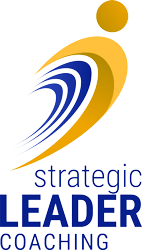It’s time for a new career. Something that is different from what you have been doing for the last 5, 10, 15 years or more. How can you use LinkedIn to Transition Brand New Type of Career?
According to Jane Heifetz, author of the Harvard Business Review Article “How to use your linked in profile to power a career transition,” there are some simple but critical ways of doing this. Be sure to check out the original article as there are some great examples in there about how you can do “niche mixing” – my term for trying to represent yourself as more than one niche.
There are so many LinkedIn gurus out there, but for most of us, they won’t be necessary in our job search. Instead try following Heifetz advice. While the article is a little oder, I like Heifetz approach because it is simple and easy to follow. Simple is hard enough.
Before we jump in, a few things to remember
You will want to use these tips for job hunting for a new type of career and networking versus finding a job that is similar to what you already have. Following these steps may increase your visibility to the right kind of recruiter.
Be very careful here, Heifetz warns that it may be very tempting to create an “everything under the sink profile”. This would qualify as a full CV, your entire history. If you do this though, you will confuse your readers. I want you to think of your LinkedIn profile as your marketing or advertising campaign. If I work for Cadbury as a marketing manager I would never show every product we have on one advertisement. No. I would highlight one product only! That is what you need to do here. Focus your profile to your new career direction. Maximize your relevant experience and leave the rest out!
Here is what to do according to Heifetz.
Headline Area – Use the limited character count to write your own eye catching headline. Don’t be afraid to put your niche in there. Write it in the first person. I.e. “I am a…” instead of “John is a…”
Summary Area – Use this section to keep them reading. Tell a compelling story and write it in the first person. Something that is relevant to your career direction. If you have more than one area you would like to focus on, make sure you “stitch them together”, don’t leave them hanging out there on their own. For example, Heifetz says that if you are using something like business consultation, health and wellness, women’s leadership you will want to use headers to call out each of the three areas with an introduction. Then under each heading let the last sentence of your description connect to the next heading (anybody remember high school English essay writing, that is exactly what you are doing here). In your conclusion, you should end it with who you want to meet or speak with. Encourage them to reach out to you using InMail.
Experience Section – Continue to write in the first person. Focus on accomplishments, not responsibilities. Most resumes focus on responsibilities. For LinkedIn we want to, instead focus on what you have done, what results you go and what you did to get those results. Only use examples and experiences that that are in line with the new job you want. Leave everything else out.
Recommendations – Invite one or two people to recommend you and don’t be afraid to suggest what their testimonials should say. It will make it simpler for them. If you can provide the text, copy paste is best to maximize other peoples time. Don’t be afraid to offer a recommendation in return.
Feel free to add images, media and links ONLY to those things you want to highlight that are in line with the new type of work you want to accomplish.
Christopher is the Chief Value Officer and Founder of Change My Life Coaching and Change My Business Coaching— a fast growing whole-life coaching company, and the only one of it’s kind. He is also the author of “Go Beyond Passion: Discover Your Dream Job”. Christopher spent 15+ years working in the corporate world with a plethora of industries and companies. His focus was primarily in planning, strategy, and leadership of change management and communication. Christopher is a Certified Master Coach Practitioner (CMCP), trainer and facilitator, and a passionate public speaker who truly cares about the success of each and every single person he comes into contact with. You can reach him at [email protected].



